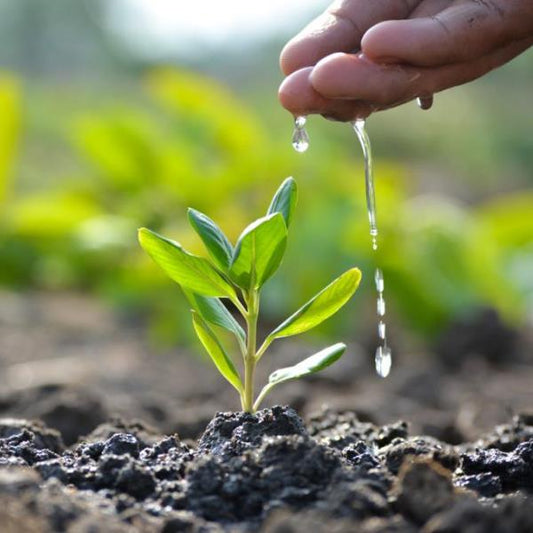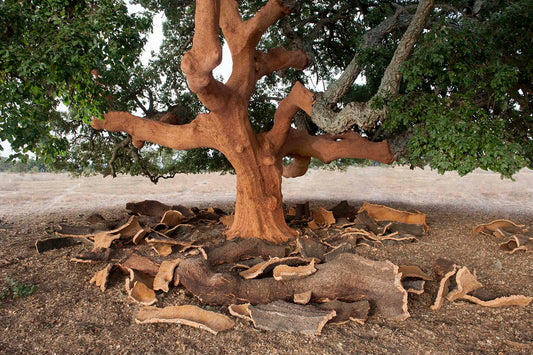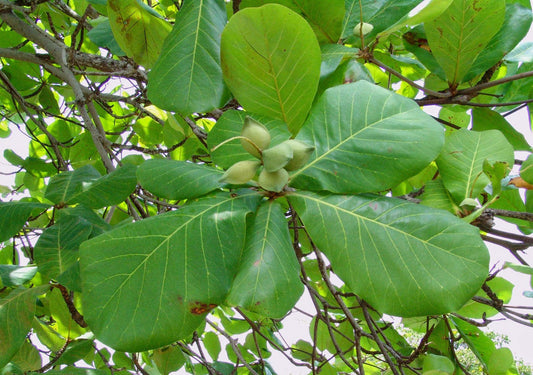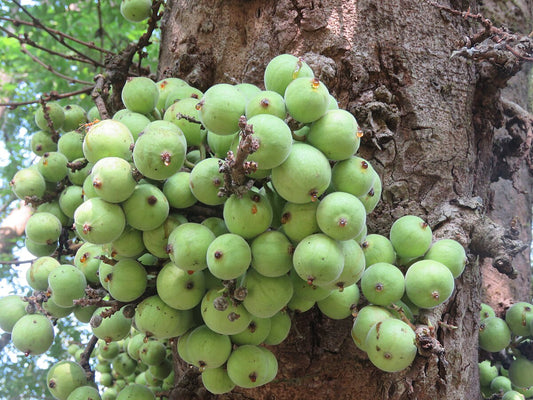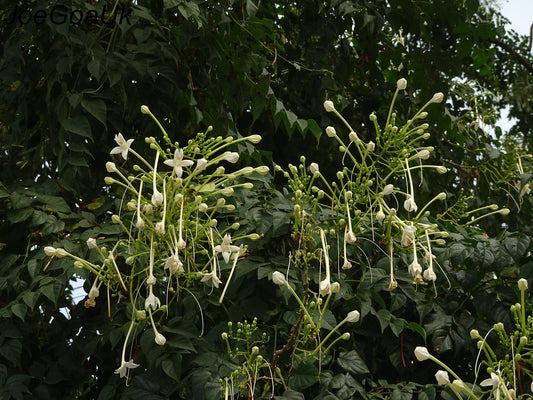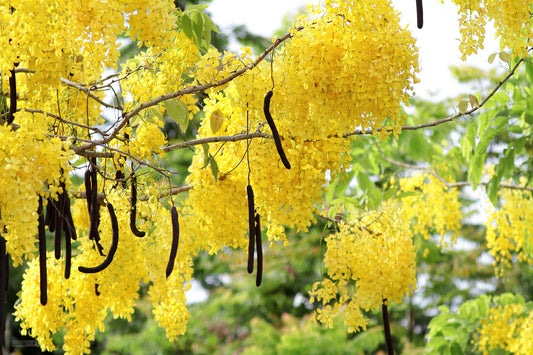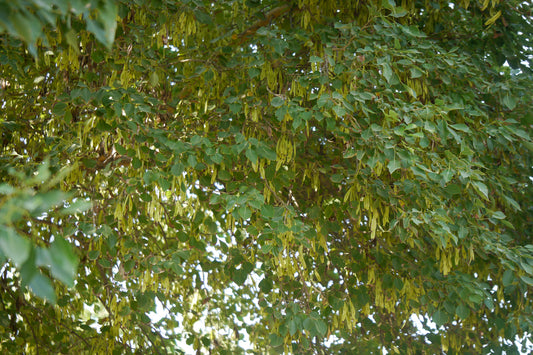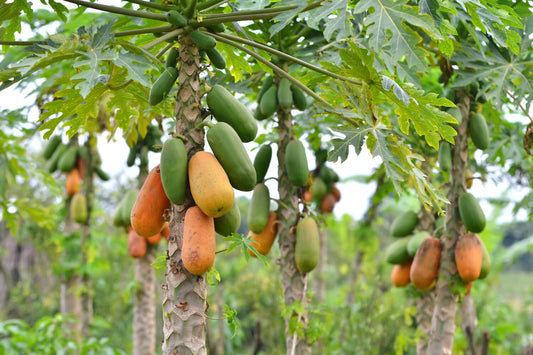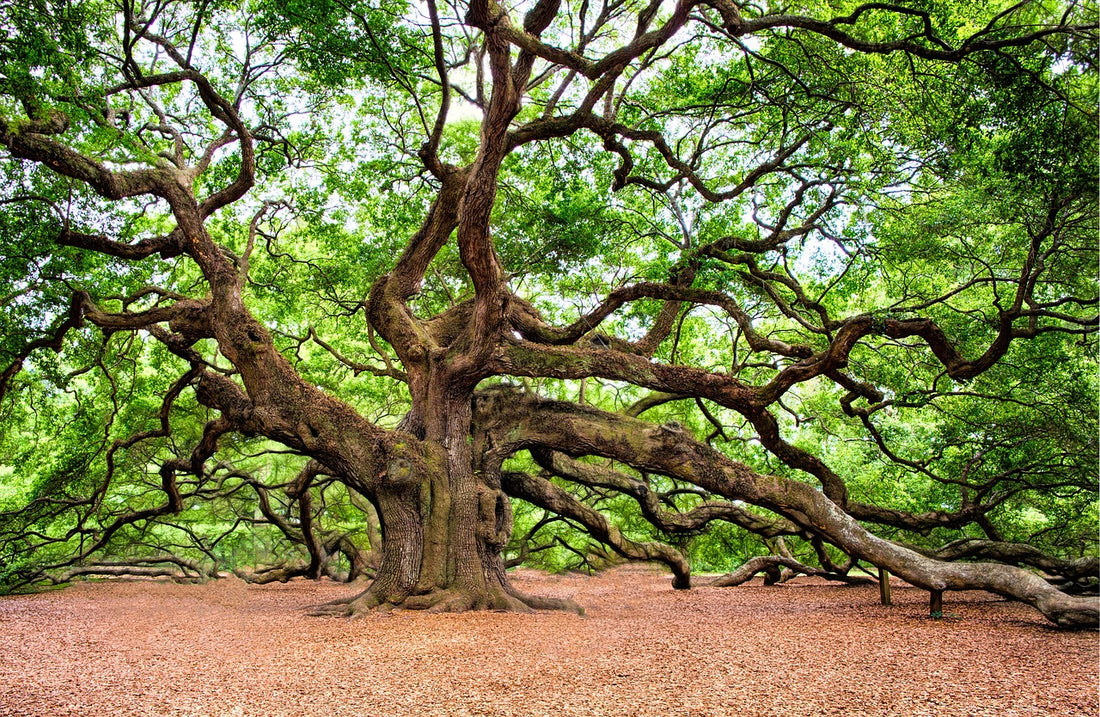

Welcome to the realm of the magnificent Oak tree, a symbol of strength, endurance, and natural grandeur. From its deep roots in history to its vital role in modern ecosystems, the Oak stands as a testament to the enduring power of nature. Let's embark on a journey through the rich tapest Read more
Trending
Trees for Corporates
Oak Tree
You may also like
Corporate Plantations
Oak Tree Facts
Explore fascinating facts about the Oak tree, renowned for its strength, longevity, and cultural significance. Learn about its various species, native habitats, and historical uses in construction, furniture making, and folklore.
Oak Tree Care
Discover essential care tips for growing and maintaining Oak trees in diverse climates and soil types. From selecting appropriate planting locations to providing adequate water and nutrients, learn how to nurture these iconic trees for optimal growth and health.
Oak Tree Timber Uses
Learn about the versatile uses of Oak wood in carpentry, flooring, and barrel making. Known for its durability, grain pattern, and resistance to decay, Oak timber is highly prized for its strength and aesthetic appeal in woodworking projects.
Oak Tree Conservation
Explore conservation efforts aimed at protecting Oak trees and their forest habitats from threats such as deforestation, invasive species, and climate change. Learn about initiatives focused on habitat restoration, species monitoring, and public education to ensure the long-term survival of these valuable trees.
Oak Tree Medicinal Uses
Discover the medicinal properties of Oak bark, leaves, and acorns in traditional herbal medicine. From treating diarrhea and inflammation to supporting heart health and wound healing, Oak has been valued for its therapeutic benefits for centuries.
Oak Tree Symbolism
Delve into the cultural symbolism of the Oak tree in mythology, literature, and art. Revered for its strength, wisdom, and connection to the natural world, the Oak tree symbolizes endurance, resilience, and longevity in various cultural traditions.
Oak Tree Habitat
Learn about the natural habitat of Oak trees, including temperate forests, woodlands, and savannas. From moist, well-drained soils to upland slopes and floodplains, Oak trees thrive in diverse ecosystems, providing habitat and sustenance for wildlife.
Oak Tree Growth Rate
Gain insights into the growth rate and development of Oak trees under optimal growing conditions. With moderate growth rates, Oak trees can attain impressive heights and spread over several decades, contributing to forest structure and biodiversity.
Oak Tree Pruning
Learn about the importance of pruning Oak trees to remove deadwood, promote healthy growth, and enhance tree structure. Explore pruning techniques, timing, and safety precautions for maintaining productive and aesthetically pleasing Oak landscapes.
Oak Tree Acorn Production
Discover the factors influencing Oak tree acorn production and the ecological significance of mast years. From weather conditions and pollination to tree age and health, various factors influence the abundance and timing of acorn crops, which provide essential food for wildlife.
Oak Tree Leaf Characteristics
Explore the distinctive characteristics of Oak leaves, including their lobed shape, serrated edges, and autumn coloration. With adaptations for maximizing sunlight capture and minimizing water loss, Oak leaves are well-suited to temperate climates and seasonal changes.
Oak Tree Root System
Learn about the root system of Oak trees and its role in anchoring the tree, accessing water and nutrients, and stabilizing soil. With deep taproots and widespread lateral roots, Oak trees contribute to soil stability, erosion control, and water infiltration in forest ecosystems.
Oak Tree Wildlife Habitat
Discover the importance of Oak trees as habitat and food sources for wildlife in temperate forests. From birds and mammals to insects and fungi, Oak trees support a diverse array of species, contributing to biodiversity conservation and ecological balance.
Oak Tree Soil Requirements
Learn about the soil requirements for growing Oak trees and optimizing their health and growth. From loamy, well-drained soils to acidic or alkaline substrates with adequate nutrient availability, Oak trees exhibit adaptability to various soil conditions.
Oak Tree Pest and Disease Management
Discover common pests and diseases that affect Oak trees and strategies for prevention and control. From insect defoliators and fungal pathogens to root rot and oak wilt disease, proactive management practices can help minimize the impact of pests and diseases on tree health and vitality.
Oak Tree Root Pruning
Learn about root pruning techniques for Oak trees to address root-related issues and promote tree health and stability. From alleviating soil compaction and improving drainage to preventing root encroachment and girdling, root pruning can enhance the vigor and longevity of Oak trees.
Oak Tree Indigenous Knowledge
Explore traditional knowledge and practices associated with Oak trees in indigenous cultures and rural communities. From folklore and rituals to sustainable resource management and agroforestry practices, Oak trees hold cultural significance and ecological value in various human societies.
Oak Tree Ethnobotany
Learn about the ethnobotanical uses of Oak trees in food, medicine, and crafts. From harvesting acorns for food and tannins for leather production to using Oak bark for dyeing textiles and brewing beverages, Oak trees have provided essential resources and cultural heritage for millennia.
Oak Tree Logging Practices
Explore sustainable logging practices for harvesting Oak timber while conserving forest ecosystems and biodiversity. From selective cutting and reforestation to certification schemes and chain-of-custody tracking, responsible logging practices can ensure the long-term viability of Oak forests and timber industries.
Oak Tree Cultural Heritage
Discover the cultural heritage and historical significance of Oak trees in art, architecture, and folklore. From ancient sacred groves and medieval cathedrals to modern urban parks and nature reserves, Oak trees have inspired human creativity and spiritual reverence across civilizations and centuries.
FAQ
What is an Oak tree?
The Oak tree, scientifically known as Quercus, is a large, deciduous or evergreen tree belonging to the genus Quercus within the family Fagaceae. Oaks are renowned for their strength, longevity, and valuable timber, and they hold cultural, ecological, and economic significance worldwide.
Where are Oak trees commonly found?
Oak trees are commonly found in temperate and subtropical regions of the Northern Hemisphere, including North America, Europe, and Asia. They occur in diverse habitats ranging from forests and woodlands to savannas and grasslands, where they play vital roles in ecosystem functioning.
What are the characteristics of Oak trees?
Oak trees are characterized by their sturdy trunks, broad crowns, and lobed leaves, which vary in shape and size depending on the species. They produce acorns, or nuts, enclosed in cup-like structures called cupules, which serve as important food sources for wildlife.
How tall do Oak trees grow?
Oak trees can vary widely in size, with some species growing as tall as 20-30 meters (66-98 feet) or more in favorable growing conditions. They have a strong, deeply rooted structure and develop a wide canopy, providing shade and habitat for a diverse range of organisms.
What is the scientific name of the Oak tree?
The scientific name of the Oak tree is Quercus, belonging to the family Fagaceae. The genus name "Quercus" is derived from the Latin word for "oak," while the species epithets distinguish between different Oak species, such as Quercus alba (white oak) and Quercus robur (English oak).
When do Oak trees bloom?
Oak trees typically bloom in spring, producing clusters of small, inconspicuous flowers that are wind-pollinated. The flowering period may vary depending on the species and local climate conditions, with some Oaks flowering earlier in the season than others.
How to care for Oak trees?
To care for Oak trees, plant them in well-drained soil in a location with full sunlight or partial shade, depending on the species. Provide regular watering, especially during dry periods, and mulch around the base of the tree to retain moisture and suppress weeds. Prune as needed to remove dead or diseased branches and promote healthy growth.
What are the benefits of planting Oak trees?
Planting Oak trees offers several benefits, including providing valuable timber for construction, furniture-making, and flooring, enhancing wildlife habitat with their acorns and foliage, and improving soil health through nutrient cycling and organic matter accumulation.
Are Oak trees suitable for urban environments?
Oak trees are well-suited for urban environments, where they provide shade, aesthetic value, and habitat for urban wildlife. They are often planted in parks, streetscapes, and green spaces, where their resilience and adaptability to urban conditions are appreciated.
How to propagate Oak trees?
Oak trees can be propagated from seeds or cuttings. Collect acorns from mature trees during the fall and sow them in containers filled with well-drained potting mix. Alternatively, take semi-hardwood cuttings from healthy, mature trees and root them in a rooting hormone solution.
What are the common pests and diseases affecting Oak trees?
Common pests affecting Oak trees include oak leafrollers, oak gall wasps, and oak borers, while diseases such as oak wilt, powdery mildew, and anthracnose can also occur. Proper monitoring and integrated pest management practices can help prevent and manage pest and disease problems.
Can Oak trees tolerate drought?
Most Oak trees have good drought tolerance once established, but they may require supplemental watering during prolonged dry periods, especially in their early years. Mulching around the base of the tree helps retain soil moisture and regulate soil temperature, promoting healthy growth.
How long does it take for an Oak tree to mature?
It typically takes several decades for an Oak tree to reach full maturity and attain its maximum height and canopy spread. However, Oaks are relatively slow-growing compared to some other tree species, and their growth rate may vary depending on species, growing conditions, and management practices.
Are Oak trees deciduous or evergreen?
Oaks can be either deciduous or evergreen, depending on the species. Many Oak species in temperate regions are deciduous, shedding their leaves in autumn, while some species in subtropical or tropical regions may retain their leaves year-round.
Can Oak trees be grown in pots?
While Oak trees can be grown in pots when they are young, they are not well-suited for long-term container cultivation due to their large size and extensive root system. They require ample space for root development and are best planted directly in the ground in a spacious, well-drained location.
What is the significance of Oak trees in landscaping?
Oak trees are prized in landscaping for their majestic form, beautiful foliage, and ecological value. They are often used as specimen trees, shade trees, or focal points in gardens, parks, and estates, where their presence adds beauty, biodiversity, and longevity to the landscape.
Are Oak trees invasive?
While Oaks are not typically considered invasive, some species may exhibit invasive tendencies in certain regions, particularly when introduced outside of their native range. Careful monitoring and management are necessary to prevent the spread of invasive Oak species and protect native ecosystems.
How do you prune an Oak tree?
Prune Oak trees in late winter to early spring before new growth emerges to remove dead or diseased branches, improve air circulation, and maintain shape. Use clean, sharp pruning tools and make cuts just outside the branch collar to promote rapid healing and minimize the risk of infection.
What is the lifespan of an Oak tree?
The lifespan of an Oak tree can vary depending on species, growing conditions, and management practices. In optimal conditions, some Oak species can live for several centuries, with some individual trees reaching ages of 300-500 years or more.
Are Oak trees protected species?
While Oak trees are not listed as protected species in most regions, they may be subject to conservation efforts and regulations aimed at preserving their ecological importance and cultural significance. Sustainable forest management practices and habitat preservation initiatives help ensure the continued existence of Oak trees and their valuable contributions to ecosystems worldwide.
Most Popular
Connect with us
-
👥 Corporates
If you are looking for:
- 🌲 Tree Plantation Events
- 📊 CSR Projects
📧 corporate@growbilliontrees.com
📞 +91 9699723523
💬 WhatsApp (Only): +91 9370599291
🕒 Mon - Sat | 10am - 7pm IST
-
🧩 Tree Plantation NGOs
If you are looking for:
- 💰 Financial Assistance
- 🤝 Operational Support
📧 support@growbilliontrees.com
📞 +91 9699723523
💬 WhatsApp (Only): +91 9370599291
🕒 Mon - Sat | 10am - 7pm IST
-
🌼 Individuals
If you are looking for:
- 👥 Group Tree Plantation Drive
- 🌳 Bulk Tree Plantation
📞 +91 9699723523
💬 WhatsApp (Only): +91 9370599291
🕒 Mon - Sat | 10am - 7pm IST



